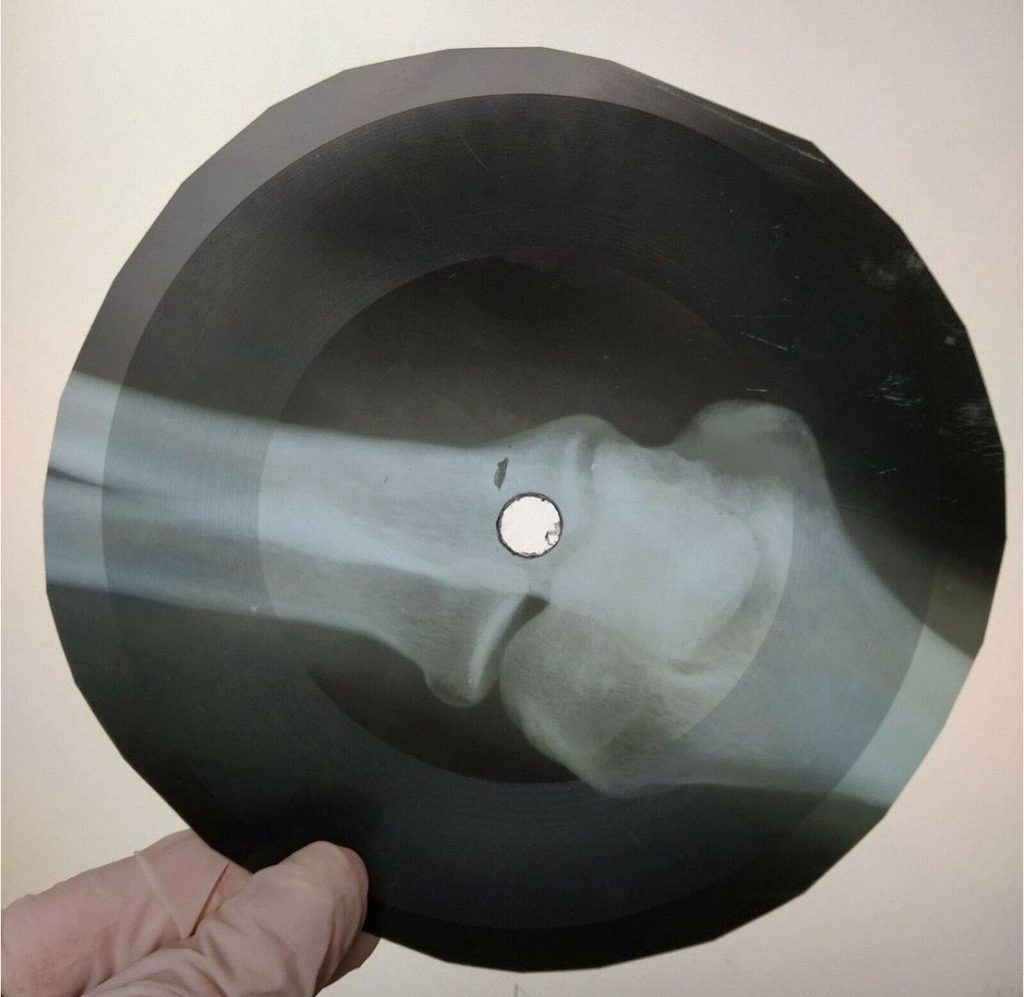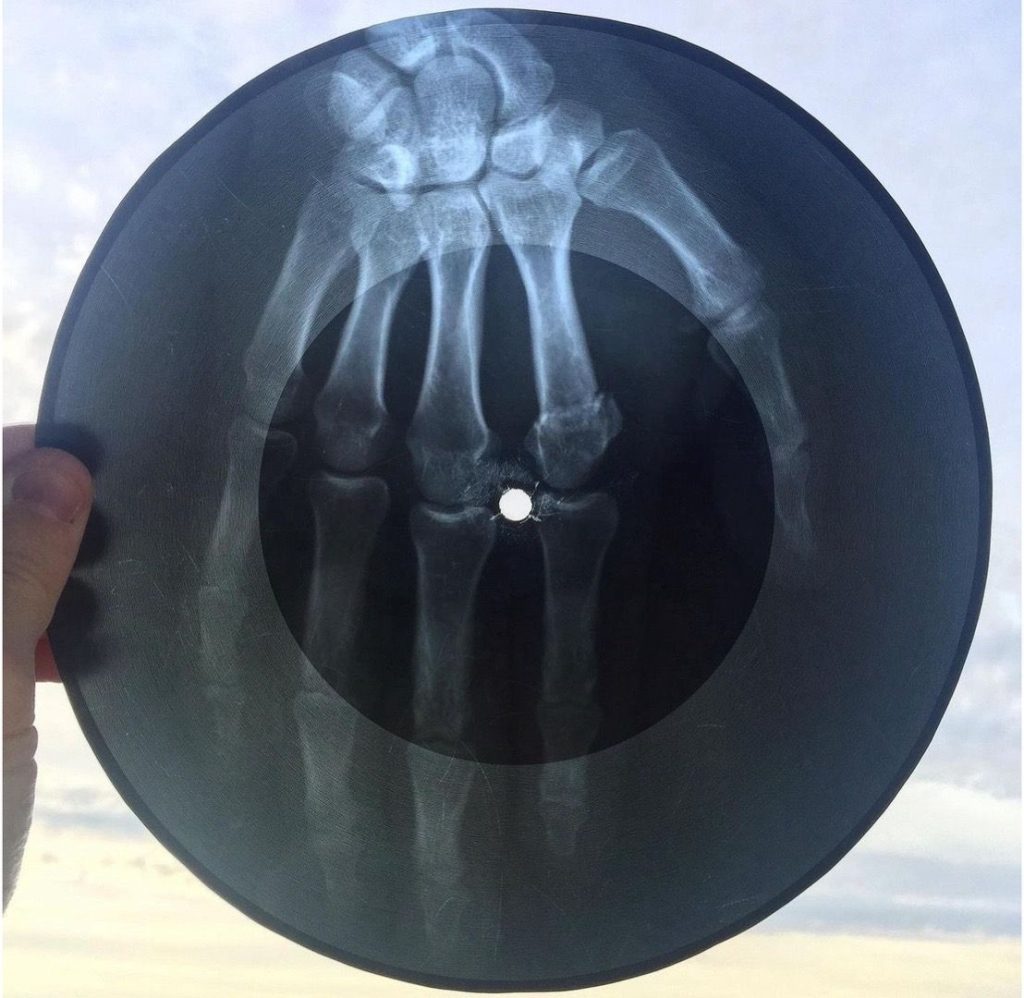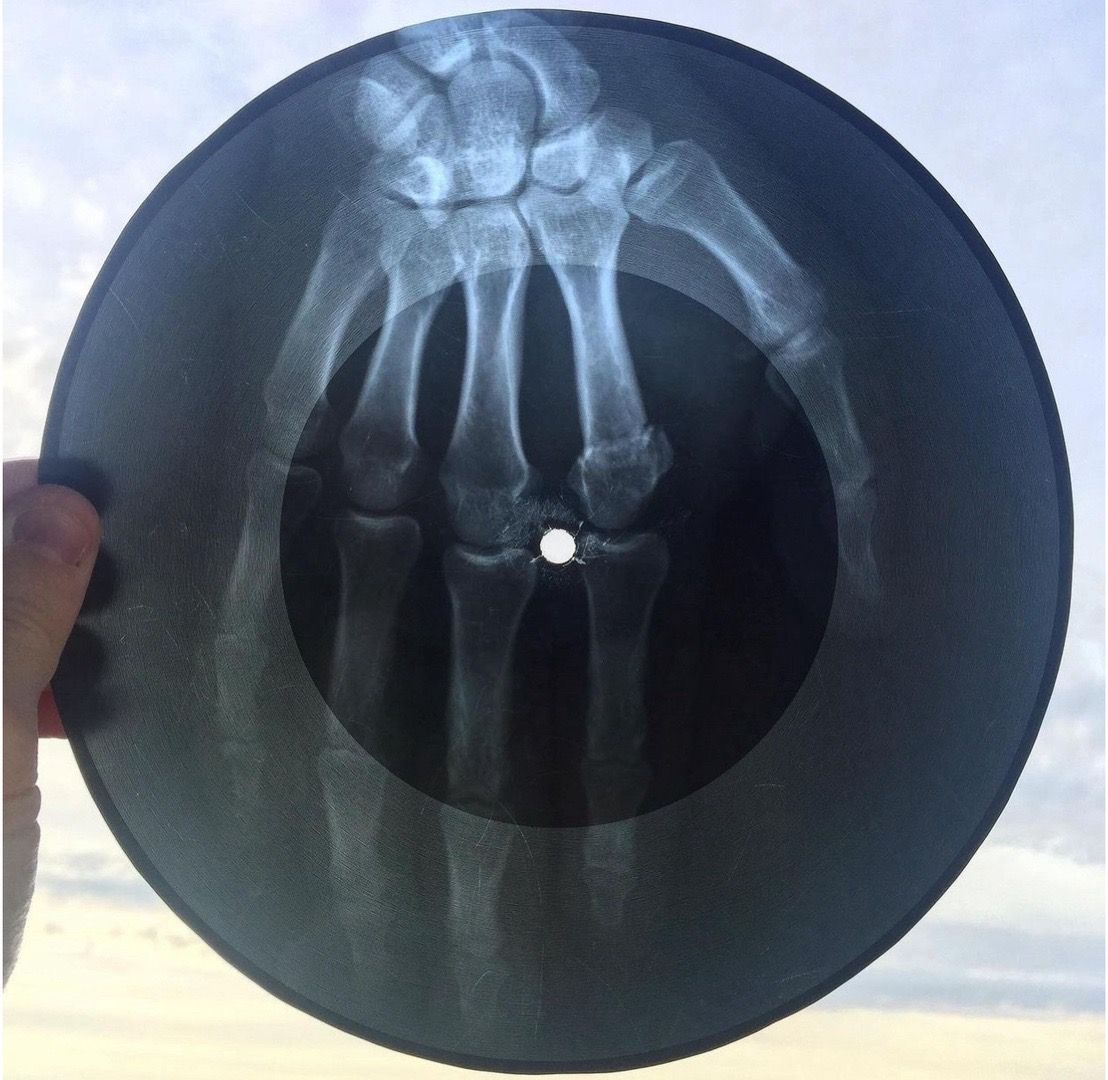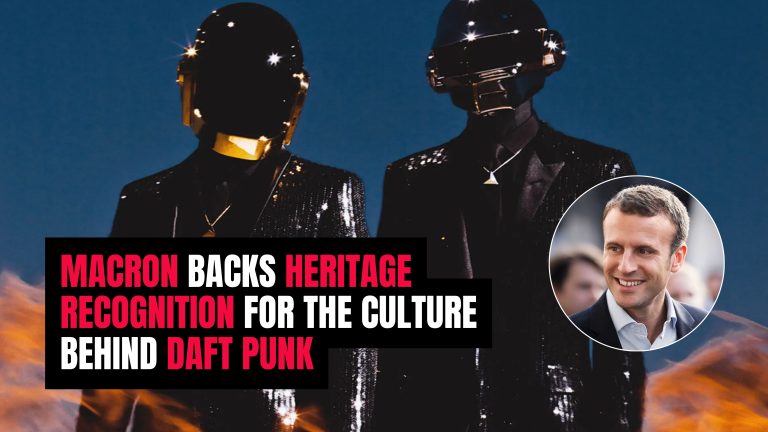In today’s digital music era, it’s hard to imagine a time when listening to your favorite song meant risking imprisonment. But in the Soviet Union of the 1950s, a unique underground movement emerged to defy cultural censorship. Known as “bone music,” this was a way for people to record banned Western genres like jazz and rock & roll onto discarded X-ray films. These makeshift records became a powerful symbol of rebellion and the lengths people would go to for cultural freedom.
Due to the scarcity of vinyl and strict government restrictions, a group of Soviet teens called the stilyagi decided to get creative. They made their own records from whatever they could find, including old X-ray films from hospitals. These bootleggers would cut the films into circles, punch a hole in the center, and use a homemade recording lathe to etch grooves into the X-rays. The images of bones often visible under the grooves earned these records nicknames like “music on the ribs” or “bone music.” For the stilyagi, these records were a way to access forbidden music from artists like Elvis Presley, Ella Fitzgerald, and The Beach Boys, while expressing their cultural independence.

Bone music was sold in secret – on street corners, in flea markets, and even outside official record stores. The ingenuity and determination of these bootleggers turned this underground trade into a widespread movement. By the early 1960s, bone records had become a popular, if risky, way for Soviet youths to resist the cultural isolation imposed by the state. Authorities eventually cracked down on these recordings, banning their production in 1958. Despite this, the movement persisted for a few more years, showing the widespread desire for connection with Western culture.
Although the sound quality was often poor, bone music represented much more than just the audio experience. It stood for defiance against an oppressive regime and a creative workaround for those who refused to be silenced. Today, these records have become relics of cultural resilience, with exhibitions and projects like the X-ray Audio Project helping bring their story to life for new generations. The legacy of bone music reminds us of the power of art to unite, inspire, and resist.

The story of bone music shares striking similarities with the roots of electronic music culture. Both movements thrived in the underground, driven by the desire for freedom of expression and access to music that was outside of the mainstream or forbidden. Just as the bone music bootleggers used whatever materials they could find, early pioneers of electronic music and rave culture often repurposed old warehouses, abandoned buildings, and even homemade synthesizers to create spaces for creativity and community away from the eyes of authorities. The DIY spirit of making and sharing bone music echoes in electronic music’s grassroots beginnings, where the focus was on breaking boundaries and fostering an inclusive community that valued the freedom to dance and express oneself.
In a world where access to music is often taken for granted, the story of bone music underscores the lengths people will go to experience freedom, even if it means cutting a record onto an old X-ray of someone’s broken arm. It’s a story of creativity, rebellion, and the unbreakable connection between music and the human spirit.
For more on bone music and its history, visit Atlas Obscura and The Vinyl Factory.




